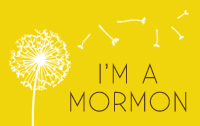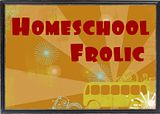Mesopotamia by Sunita Apte was a great find. It covered quite a lot of material for the targeted age group (early elementary) and had great maps and other images. High quality book, but not in-depth enough for older elementary-aged kids.
The Tigris and Euphrates: Rivers of the Fertile Crescent by Gary Miller was perfect for this unit. It has photographs of the Middle East today (well, recently) which gave my kids a better idea of what the area looks like. We didn't read this book, we just looked at the pictures and talked about it. Excellent.
I looked through several large atlas type books, and my favorite by far is DK's Atlas of the Ancient World: People and Places from the Past. It's DK quality, with lots of amazing photos and illustrations, plus some nifty extras. The best part, for me, was that it covered more of the world than the other atlases I looked through. This is on my purchase list so I can use it all year!
Some archeologist's think that the Sumerians were the first to invent the wheel. Because of my personal feelings on the matter, I went ahead and taught my kids that the Sumerians were the first people to invent the wheel that archeologists know about. We read about it in our Technology of the Ancients book and then read Get to Know Wheels and Axles by Paul Challen. I'm sure there are dozens of good books about wheels. This is one of them. Good, bright photographs, good explanations, and just the right length.
Next we learned about weights and measures. I couldn't find a picture of the cover of the book we read, but it is called Weight and was written by Henry Pluckrose. It was good. My kids loved that the photographs often involved a toy scale. Whatever floats your boat, kiddos.
We also read Writing in Ancient Mesopotamia by Jil Fine. It was great--a really good length and good information. We read that before writing our own cuneiform in clay "tablets."
The Sumerians are credited with figuring out the need for zero. Obviously, the kids and I needed to discuss the importance of zero and how hard it would be to have a money system or weight system without zero. Even if you never study math or Mesopotamia, you should really read Zero the Hero by Joan Holub. I would go so far as to say it is a must read. It is hilarious, and while the kids are laughing at one thing you are chuckling at something else that went over the kids' heads completely. Humor for all ages. I love good math books.
A Place for Zero: A Math Adventure by Pamela Rice Hahn wasn't quite as good as Zero the Hero but it was still fun and my kids really liked it.
My children's favorite "extra" book was Chickens May Not Cross the Road and Other Crazy (But True) Laws by Kathi Linz. The illustrations are great and the laws included in the book really are crazy. My very favorite: "Riding an ugly horse is illegal" in Wilbur, Washington. Awesome. Of course, we read the book in connection with Hammurabi's Code. Good times. Much giggling.
My history group was going to make a version of The Hanging Gardens of Babylon, but ran out of time. To prep for that activity, I read the section in the book Seven Wonders of the Ancient World by Lynn Curlee about The Hanging Gardens. The illustrations are nice and the information is concise. Perfect. My children were a lot more interested in the wall around Babylon and the fancy entrances then they were the Hanging Gardens.
My husband has been reading Gilgamesh by Bernarda Bryson to the children as their bedtime story. All the children love it, and I love hearing my husband's different voices for the characters. I looked through several versions of Gilgamesh and some depict the taming of Enkidu as very sexual. I wasn't a fan of those versions. This one is better.
To end this exceedingly long post, let me just say that there is a definite scarcity of good history books about the Middle East. I'm not talking about what they wore or what they built, I'm talking who did what when and why and how it affected the rest of the region. I just wanted a history book and never found one. If you know of one--please share!


















No comments:
Post a Comment